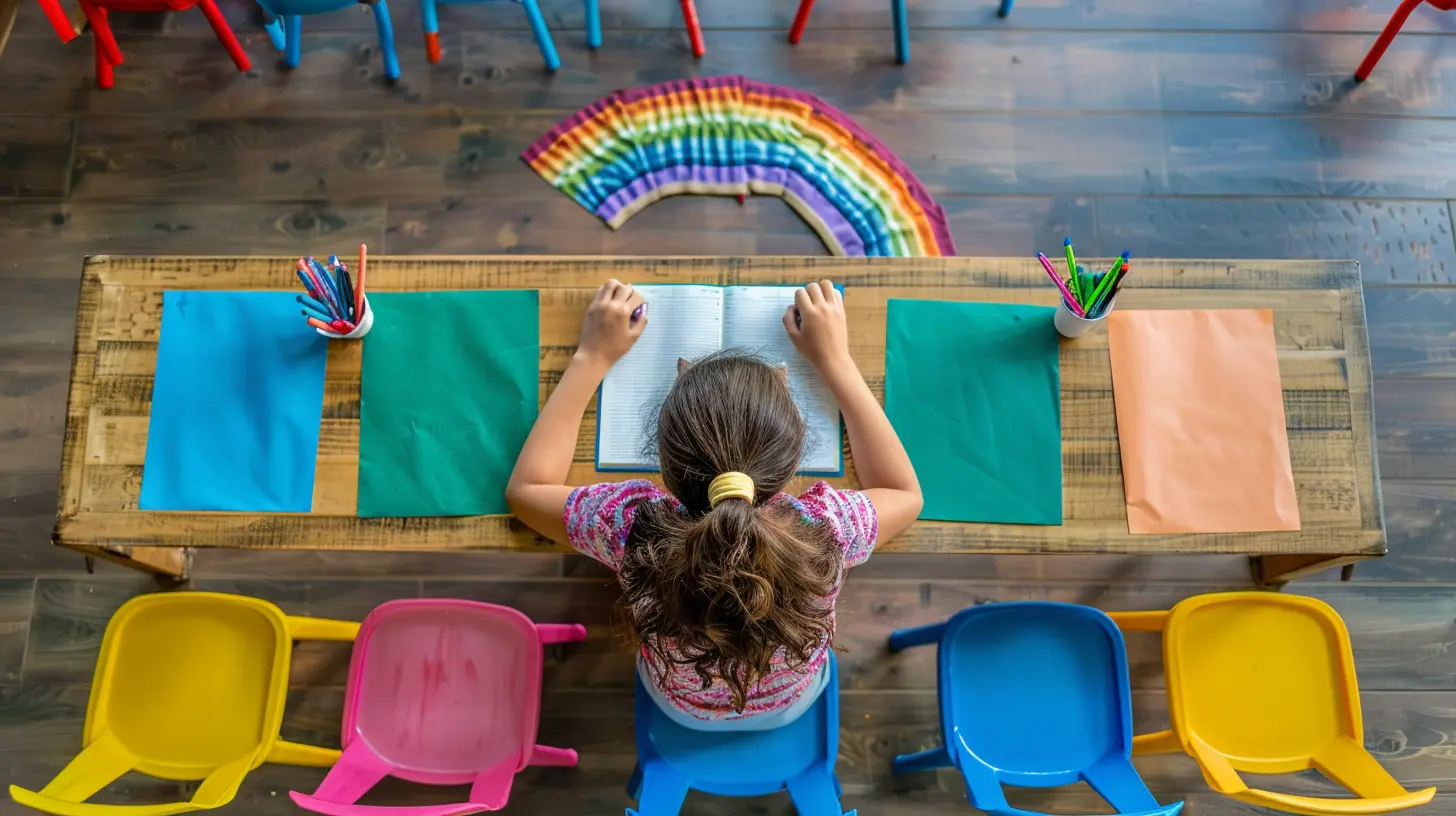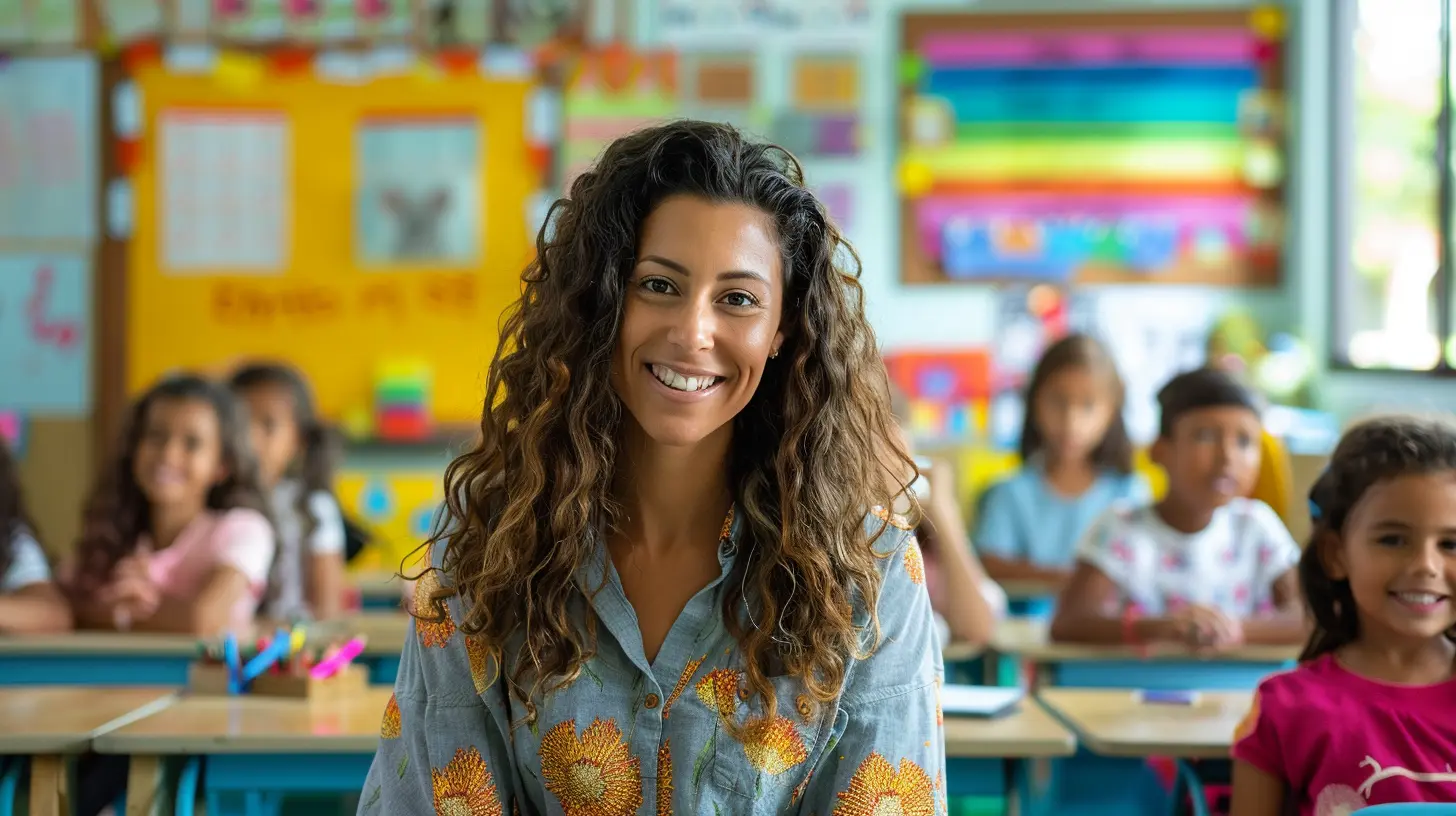Differentiation in the Modern Classroom: Best Practices for Teachers
8 May 2025
Teaching in today's world isn't just about delivering lessons anymore. Classrooms are filled with students of different backgrounds, learning styles, and abilities. Some students grasp concepts quickly, while others need a bit more time. Some thrive with hands-on activities, while others prefer reading and reflection.
So, how do we meet all these diverse needs without losing our sanity? The answer lies in differentiation—a powerful strategy that helps teachers cater to every student effectively. Let’s dive into what differentiation is, why it matters, and how you can implement it successfully in your classroom.
What is Differentiation in Education?
At its core, differentiation is all about adapting teaching methods to accommodate the varied learning needs of students. It’s not about creating 30 different lesson plans for 30 students (because let’s be real, that would be impossible). Instead, it’s about making smart tweaks so that every child gets what they need to succeed.Think of it this way: if a group of friends goes out for pizza and one person is gluten-free, you'd order a gluten-free crust for them. The goal is the same—everyone enjoys a meal—but the approach is slightly different based on individual needs.
Differentiation involves modifying content (what students learn), process (how they learn), product (how they demonstrate learning), and environment (the classroom setup) to maximize student success.
Why is Differentiation Important?
Imagine teaching a class full of students with different skill levels, interests, and challenges and expecting them to learn in the same way. It simply wouldn’t work. Differentiation helps by:- Boosting Engagement – When students feel like lessons are tailored to them, they’re more likely to stay interested.
- Building Confidence – Struggling students get the support they need, while advanced learners remain challenged.
- Encouraging Independence – Students take ownership of their learning when given choices that align with their strengths.
- Promoting Equity – Every student, regardless of ability level, has access to meaningful learning experiences.
A classroom that embraces differentiation is a classroom that celebrates diversity, ensuring no student feels left behind.
Best Practices for Differentiation in the Modern Classroom
Now that we know why differentiation matters, let's explore some effective ways to bring it to life in your teaching!1. Know Your Students Inside and Out
Before you can tailor lessons, you need to understand your students' needs. Get to know their strengths, weaknesses, interests, and learning styles. You can do this through:- Pre-assessments to gauge prior knowledge.
- One-on-one conversations to understand student goals.
- Observation to see how they interact with different types of content.
- Surveys and interest inventories to determine what excites them.
The better you know your students, the easier it is to create learning experiences that truly resonate with them.
2. Use Flexible Grouping
Grouping students strategically allows them to learn from each other while still getting what they need individually. These groups should be fluid, meaning they change depending on the lesson or activity.- Homogeneous groups (same ability levels) help struggling learners get extra support without feeling overshadowed by faster learners.
- Heterogeneous groups (mixed ability levels) encourage peer learning, where stronger students can reinforce their understanding by teaching others.
- Interest-based groups allow students to work on topics they love, increasing motivation and engagement.
The key? Avoid static groups—mix them up regularly to provide different learning experiences.
3. Offer Choice in Learning
Giving students choices empowers them and makes learning more engaging. Whenever possible, allow students to decide:- How they learn – Watching a video, reading an article, or doing a hands-on activity.
- How they demonstrate understanding – Writing an essay, creating a slideshow, or building a model.
- Who they work with – Working solo, in pairs, or small groups.
For example, instead of assigning a standard book report, let students choose how they analyze the book—through a written review, a podcast, or even a short play. Choice fuels motivation and ownership in learning.
4. Differentiate Assessments
Traditional tests aren’t the only way to check understanding. Some students struggle with written exams but shine in oral presentations or creative projects. Instead of a one-size-fits-all approach, use a variety of assessments:- Formative assessments (quick checks like quizzes, discussions, or reflections).
- Summative assessments (projects, essays, or presentations).
- Self-assessments where students reflect on their own learning progress.
This ensures that all students have a fair chance to demonstrate their knowledge in ways that suit them best.
5. Implement Tiered Assignments
Tiered assignments help students at different levels work on the same concepts, but with different levels of difficulty. Instead of giving one task to the whole class, create a few different versions:- Basic Tier – Focuses on foundational skills (for students who need more support).
- Intermediate Tier – Slightly more complex (for students who grasp concepts but need reinforcement).
- Advanced Tier – Encourages critical thinking (for students who need a challenge).
For example, if you’re teaching a lesson on fractions, one group might work on simple addition of fractions, another on mixed number conversions, and another on real-world applications like baking ratios.
6. Utilize Technology for Personalized Learning
Technology can be a game-changer for differentiation. With online platforms, students can work at their own pace, revisit concepts when needed, and tackle challenges suited to their skill level. Some great tools include:- Khan Academy – Offers personalized learning paths in math, science, and more.
- Google Classroom – Allows for assignments tailored to different student needs.
- Edpuzzle – Turns videos into interactive lessons where students progress at their own speed.
- Flipgrid – Encourages student voice and collaboration through short videos.
Incorporating tech ensures that students learn at a pace and style that works best for them.
7. Foster a Growth Mindset
Finally, differentiation isn’t just about strategies—it’s about building a classroom culture that supports all learners. Encourage students to embrace challenges and view mistakes as opportunities to grow.Some simple ways to promote a growth mindset:
- Praise effort instead of intelligence (e.g., “You worked so hard on that problem!” instead of “You’re so smart!”).
- Reinforce that everyone learns at their own pace.
- Share stories of famous figures who struggled before they succeeded.
When students believe they can improve with effort, they engage more deeply in learning.
Final Thoughts
Differentiation isn’t about making teaching harder—it’s about making learning more effective for every student. By getting to know your learners, offering choices, using flexible grouping, and leveraging technology, you can create a classroom where all students feel valued, supported, and challenged.Yes, differentiation takes effort, but trust me—it’s worth it. After all, wouldn’t you rather teach a classroom full of engaged and motivated learners than one where half the students feel lost? The extra work you put in today will pay off in happy, confident students tomorrow.
So, are you ready to embrace differentiation and transform your classroom? Let’s do this!
all images in this post were generated using AI tools
Category:
Differentiated InstructionAuthor:

Olivia Chapman
Discussion
rate this article
6 comments
Falkor Rosales
Thank you for sharing these insightful strategies! Differentiation is crucial in today's diverse classrooms, and your practical tips will undoubtedly empower teachers to better meet their students' varied needs. Great resource!
May 16, 2025 at 4:28 AM

Olivia Chapman
Thank you for your kind words! I'm glad you found the strategies helpful for supporting diverse learners.
Thomas McNair
Effective differentiation enhances student engagement and personalizes learning experiences.
May 15, 2025 at 1:02 PM

Olivia Chapman
Thank you for your insight! Effective differentiation truly is key to fostering engagement and tailoring learning to meet individual needs.
Uri McCune
Empowering every student through differentiation isn’t just a practice; it's a commitment to inclusivity and growth. Embrace diverse strategies, ignite curiosity, and transform challenges into opportunities. Together, we can create vibrant classrooms where every learner thrives and passion for knowledge flourishes!
May 11, 2025 at 6:28 PM

Olivia Chapman
Thank you for highlighting the essence of differentiation! Embracing diverse strategies truly ensures that all students have the opportunity to thrive and grow in an inclusive environment.
Dior McMichael
Ah, differentiation—the educational equivalent of trying to bake a cake for every buddy’s unique dietary needs! Just remember: while some students want gluten-free, others may ask for extra sprinkles. Embrace the chaos, and may your classroom be the sweetest bakery of learning!
May 10, 2025 at 5:04 AM

Olivia Chapman
Thank you for the delightful analogy! Embracing diverse needs truly can turn our classrooms into vibrant spaces for learning. Let's keep baking those sweet success stories!
Zevros Estes
Differentiation in the modern classroom is essential for addressing diverse learning needs. Implementing strategies such as flexible grouping, varied instructional methods, and ongoing assessment can enhance student engagement and achievement, fostering a more inclusive and effective learning environment.
May 9, 2025 at 6:37 PM

Olivia Chapman
Thank you for highlighting the importance of differentiation! Your points on flexible grouping and varied methods are crucial for creating an inclusive learning environment that meets diverse student needs.
Berenice Vaughn
Embracing differentiation in the classroom empowers every student to thrive! By tailoring your teaching methods to meet diverse learning needs, you inspire growth and foster a love for learning. Remember, small adjustments can make a big impact—let your passion for teaching shine and watch your students flourish!
May 8, 2025 at 12:33 PM

Olivia Chapman
Thank you for your insightful comment! I wholeheartedly agree that embracing differentiation is key to nurturing every student's potential. Small tailored adjustments can truly transform learning experiences.




